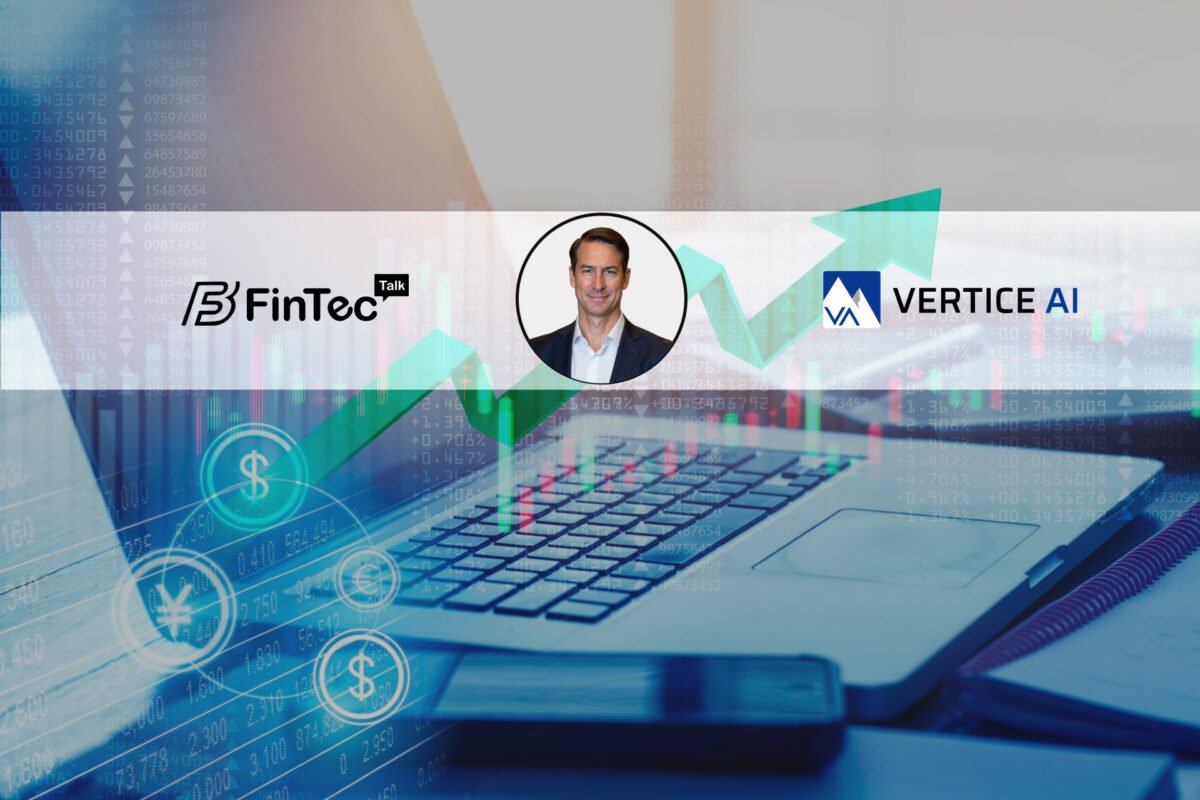Discover how AI and automation are revolutionizing traditional work methods.
Adam, Can you provide a brief overview of your professional journey and how it led you to become the CEO of WorkFusion?
I’ve been a tech exec for over 25 years. Five years before I joined WorkFusion, I was co-founder and CEO of a data governance company called erwin – which was sold to Quest Software. Prior to that, I was an executive at Verizon and CA Technologies.
After the sale of erwin, I had about six months to spend with my family when this opportunity came along. I was inspired and attracted to WorkFusion because it has brilliant AI software born out of MIT Labs. Our Work.AI platform is built off of industry-leading intelligent document processing combined with machine learning, which serves as the backbone to create our AI Digital Workforce.
Could you explain what WorkFusion does and how its AI Digital Workers contribute to business processes?
Simply put, WorkFusion automates work with AI. Our AI Digital Workers automate document-heavy and laborious work for financial services and other companies. They are AI copilots that align with actual job roles on the open requisition rosters of financial services firms, particularly in anti-money laundering like adverse media and sanctions screening alert review, transaction monitoring, and KYC. You can essentially “hire” an AI for a very specific job function. They contribute to the business processes by augmenting the team and improving an organization’s risk posture.
For example, many of our customers have struggled to find and keep employees, particularly at the L1 level. With AI Digital Workers, attrition and volume spikes have essentially zero impact on operations, and analysts can spend 90% more time on more challenging (and more rewarding work).
What specific problems do WorkFusion’s AI Digital Workers aim to solve, and how do they address these challenges in the business environment?
A common use case for AI Digital Workers is staff management, including staffing, retention and capacity. There simply aren’t enough workers to do the work. Many of our banking and financial services customers have struggled to attract and retain staff. When an employee leaves, the burden of the extra work is typically absorbed by the remaining employees, creating burnout, which may spur them to look for another job, creating a cycle of employee churn.
At the core of what we do is risk mitigation. AI Digital Workers can help improve quality and eliminate backlogs. For example, a top 30 US bank used our AI Digital Worker, Evelyn, to navigate an MRA (matter requiring attention). They used the Digital Worker to complete their entire backlog of work. The best news is that material and immaterial errors were reduced by 70-90%, and the work delivered was consistently high-quality. Compare that to each worker doing their own thing, which can lead to inconsistencies. AI Digital Workers result in high-quality and consistent reviews with detailed reporting for audit trails and compliance reporting. Because AI doesn’t get bored with tedious work, it is less likely to miss the “true positive” needle in the haystack. And, with consistent quality, the team spends less time on the back end correcting any errors, which ultimately saves the organization dollars and cents.
Can you elaborate on the range of tasks that WorkFusion’s digital workers are proficient in managing within different industries?
Our pre-built AI Digital Workers are exclusively built for banking and financial services because that is where we had the domain knowledge to train the ML models. Our AI Digital Workers come out of the box with about three years of experience. They cover a range of job roles, including sanctions screening alert review, adverse media monitoring, transaction monitoring investigations, customer service and KYC.
For other industries, we have our Work.AI platform. We do not have the depth of knowledge in those industries, but organizations can use our no code platform to build a Digital Worker to automate whatever role they want. For example, Epiq is a large technology-enabled services leader to the legal industry, and they leveraged Work.AI to build a custom Digital Worker to surface critical intelligence about communications that may create legal liability for corporations.
How are financial institutions leveraging WorkFusion’s AI Digital Workers, and what advantages do these institutions gain from the integration of automation?
Financial institutions are hiring our AI Digital Workers for risk management, program efficiency, and staffing. A good example is the Russia-Ukraine war. The volume of sanctions alerts spiked exponentially overnight. Multiple top 15 banks deployed the AI to handle the increased volume of Russian sanctions caused by the war. Our technology can scale 10x the capacity to handle geopolitical events with zero impact on the organization. Our customers also gain speed with onboarding, accelerated time to decision regarding escalations, thorough audit trails and detailed narratives for regulators, and cost savings. The benefits go on and on.
In what ways are AI and automation contributing to the enhancement of processes within the banking sector, and what specific benefits are financial institutions experiencing?
The key thread to what we’ve discussed here is how banks and other financial institutions are applying AI and automation to their operations processes, such as customer onboarding, mortgage processing, and anti-money laundering efforts. To build on the impact of the Russia-Ukraine War, the increased economic sanctions had a major impact on the financial institutions tasked with implementing these tighter sanctions screening efforts. With manual operations, a transaction may get delayed for hours due to similarities on one of the sanctions watchlists – now more frequent with the increased sanctions. With AI and automation in place, nearly all of that time can be eliminated in 70, 80, 90 percent of cases – which not only reduces the burden and stress of staff but improves the customer experience through faster payments. In another example, troves of paperwork still facilitate banking areas like mortgage processing. In some scenarios, there’s physical paper to be scanned, and others arrive in digital format, but so much of it comes in various types of documents and layouts, which had been tricky to automate. With advances in AI and automation, financial organizations can save millions of dollars in making sense of their data.
How do you foresee AI and automation fueling a shift in how work is traditionally done, especially in industries heavily reliant on manual processes?
Much like how the internet affected how we work, AI will have the same effect on all industries. People adapt and will start to use the technologies that make their jobs better and easier. Organizations must start working with employees to upskill them and let AI take over the laborious work. In banking, even regulators want FIs to innovate and look for new ways to perform old processes. A few months ago, we conducted a survey and found that 86% of organizations said they would increase their spending on AI and machine learning over the next two years. Further, a staggering 93% of respondents to our survey said that instead of using automation to reduce staff, they would focus that extra capacity on strategies to manage risk and grow the business.
What’s your perspective on “hiring” technology, and how do you approach integrating new technologies into your team or organisation?
Organizations can “hire” AI for highly skilled work, freeing their employees to do what humans do best—create and innovate. For organizations in highly regulated industries, AI can provide reasoning around why it made a decision and provide detailed documentation, ensuring stronger audit trails.
We believe that “hiring” technology is going to be integral to helping organizations tackle their operational needs, whether it’s a staffing challenge, cost challenge, or part of their modernization efforts. But, using software is culture-changing. It will require a cultural shift in how people and technology work together – and I believe that we will see the melding of humans + AI working together in hybrid teams. As a matter of fact, we created our AI Digital Workers because we saw how our customers worked with the technology. One customer had a cardboard cutout of a person that represented our AI. The revelation led to us personifying and humanizing our AI and creating the Digital Workers as they’re represented now. Chief AI Officers and Chief Automation Officers should start working with HR to look for opportunities where AI can fill open job roles. Organizations will also need to determine how employees and AI can work best together.
Based on your experiences, what advice would you offer to individuals and businesses looking to navigate the rapidly evolving landscape of AI and automation?
I’d say embrace it. It’s not going anywhere. Five years from now, how we work will look much different than it does today.
As we conclude our discussion, what final thoughts or insights would you like to share with our audience regarding the future of work, technology, and innovation?
There has been a fear of AI coming for jobs, but that fear is overblown. AI is going to up-level the work we do. Employees need to start learning to work with AI and learn how it can give them a competitive advantage. But they will need to learn, understand, and put it into practice. Businesses need to identify an AI strategy, much like they approached digital transformation or cybersecurity. They need to look at specific use cases where AI will effectively increase team capacity, raise productivity, reduce human error and improve compliance.
Stay Ahead of the Financial Curve with Our Latest Fintech News Updates!




